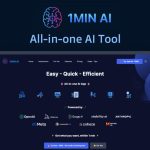The World Health Organization and their “One Health” approach are coming for the world’s food systems, aiming to meld them with the health insurance and medical fields. The outcome will be food tokens, medically tailored meals and prescription food programs that both dictate what you eat and have the power to impose penalties if you stray too far off course.
“How do you get people to break? Control their food and money,” investigative journalist Corey Lynn explains. “What is the weapon? Controlling your identity through digital means. The smart phone, QR codes, digital identities, biometrics, AI, and chips are all weapons being used against humanity.”1 You can listen to Corey discuss this on Spotify by going to her channel Dig It! Episode #189.2
Are Food Tokens in Your Future?
It was October 2022 when the WHO announced its One Health Joint Plan of Action, launched by the Quadripartite, which, in addition to WHO, consists of the:3
Food and Agriculture Organization of the United Nations (FAO)
United Nations Environment Programme (UNEP)
World Organisation for Animal Health (WOAH, founded as OIE)
“The Quadripartite will join forces to leverage the needed resources in support of the common approach to address critical health threats and promote the health of people, animals, plants and the environment,” according to a WHO press release.4
Echoing this statement, WHO Director-General Tedros Adhanom Ghebreyesus stated that “a transformation of the world’s food systems is needed urgently, based on a One Health approach that protects and promotes the health of humans, animals and the planet.”
Part of this is a new “food is medicine” agenda, including from the White House,5 which isn’t nearly as holistic as it sounds. Instead, “food is medicine” is the phrase “being used to campaign, launch programs, change policies and financing, aggregate data, tie the health care industry in with the food supply, and ultimately screen, track and control people through food,” Lynn says.6
It’s a smokescreen, under which more people will be ushered into the Supplemental Nutrition Assistance Program (SNAP), the Women, Infants and Children Program (WIC), and similar initiatives so digital food tokens can be implemented. This allows for the tracking and control of people’s food purchases.
A number of big names have recently joined in the push to increase SNAP enrollment, including Google, which intends to make it easier to find out eligibility and apply for the program.
Other partners include Instacart, the U.S. Department of Agriculture and the Food Industry Association. Benefits Data Trust is also working to help facilitate the enrollment of college students into SNAP, Medicaid and the Affordable Connectivity Program, which provides help to obtain internet access.
Again, these seemingly altruistic plans have an ulterior motive — surveillance and control. “Food, health care and internet may seem like a wonderful free benefit, until a college student tries to get their first cheeseburger, doesn’t get the Covid jab, or puts out ‘misinformation’ on the internet,” Lynn says. “Watch how quickly it’s all taken away. It’s like making a deal with the Devil.”7
It’s All a Trap
Once you’re locked into receiving food tokens, you’ve fallen into their trap. Who’s “their”? Lynn has previously described key organizations pulling strings behind the scenes, allowing them to “operate as ghosts without transparency or accountability.”8 These powerful organizations enjoy unrestricted privileges and layers of immunity, allowing them to exert control over the globe.
“These aren’t just ordinary organizations,” Lynn explains. “They happen to be the prime organizations that run the new world order globalists’ agendas against humanity, and they have hundreds of NGOs working with and through them.”9 The roll-out of “healthy eating tokens” isn’t just a possibility.
They’ve already been woven into key propaganda pieces, like this 2018 image below from the Illinois Blockchain and Distributed Ledger Task Force:10,11 “Whereas this example may be reflective of a welfare applicant,” Lynn says, “make no mistake, this is the goal all states are trying to accomplish for all people, not just those on welfare.”12
Pitfalls of White House’s $8 Billion Commitment
In line with WHO’s One Health, the White House laid out a Fact Sheet detailing its “transformational vision for ending hunger and reducing diet-related disease by 2030 – all while closing disparities among the communities that are impacted most.”13
The initiative intends to invest in “new businesses and new ways of screening for and integrating nutrition into health care delivery,” along with devoting at least $2.5 billion to startup companies “pioneering solutions to hunger and food insecurity.” Another $4 billion is earmarked for “philanthropy that improves access to nutritious food, promotes healthy choices and increases physical activity.”
Here again we have the smoke-and-mirrors effect, which masks the integration of food and health as a means to enact broad policies of control. As Lynn reports:14
“A helping hand is always nice, until it has ulterior motives. Sure, physical activity for all and the reduction of sugar in food items are both welcome approaches, but the rest of this agenda is not in the best interest of human beings.
The problem is, when reviewing this Fact Sheet it may seem like a good idea, just as while reviewing a single white paper from the WEF [World Economic Forum] could even sound like it has the potential to be a good thing.
However, when one takes the Fact Sheet with countless white papers, websites, funding, and other internal documents and puts it all together — it paints quite a different story. They know full well that most people won’t gather all of the pieces of the puzzle so they won’t be able to see the reality of the situation and discern the true agenda. That’s why it is so critical to do just that.”
The White House intends to work with a long list of private organizations to reach its goals. The American Heart Association, American Academy of Pediatrics, Joint Commission, National Grocers Association, Food Industry Association and the Rockefeller Foundation are among them.
Globalists Team Up to Tell You What to Eat
The Rockefeller Foundation, the American Heart Association and Kroger have already partnered to develop and launch the Food is Medicine Research Initiative.15 It includes programs like produce prescriptions and medically tailored meals,16 which sound good in theory. But entities like the Rockefeller Foundation aren’t looking to further the reach of small farmers producing real, healthy food.
Consider the Alliance for a Green Revolution in Africa (AGRA), which was launched in 2006 with funding from the Rockefeller Foundation and the Bill & Melinda Gates Foundation. With strategies centered on promoting biotechnology and chemical fertilizers, AGRA’s influence significantly worsened the situation in the 18 African nations targeted by this “philanthropic” endeavor. Hunger under AGRA’s direction increased by 30% and rural poverty rose dramatically.17
The Green Revolution is another Rockefeller Foundation-funded conversion of natural farming to a system dependent on chemicals, fossil fuels and industry. You can expect that under this Food is Medicine initiative, genetic engineering, lab-grown meat and, eventually, insects will take center stage. Plus, it’s another tool for integrating food under health care, so you can ultimately be tracked with one digital health passport. Lynn says:18
“Of course food is medicine, but that’s not the true intention of this initiative. By integrating food under medicine just imagine how this will change the landscape of the control mechanisms being put in place under the guise of health care.
This isn’t the only avenue the Rockefeller’s are using to orchestrate this shift in food control. They are also one of the major funders of the Center for Good Food Purchasing, along with W.K. Kellogg Foundation, Panta Rhea Foundation, Michael & Susan Dell Foundation, and the 11th Hour Project — the grant-making vehicle of the Schmidt Family Foundation — former Google CEO Eric Schmidt.
The stated goal of this “Center” is to manage the Good Food Purchasing Program, which is all about getting institutions to convert over to their “supply chain transparency from farm to fork and shift towards a values-based purchasing model.”
Converting schools, hospitals, and public administrations is a strong goal, for starters. They’ve established standards, certifications, and a point system as the first of its kind and are building local and national partners as quickly as they built the website.”
Meanwhile, they’re rolling out Food is Medicine courses at hospitals and universities in order to indoctrinate health care providers into this plan. Among the training will be “screening for nutrition” and instruction on how to refer patients to their community nutrition resources, likely along with education on the “benefits” of gene-edited foods and fake meat.19
What Happens if You Veer From Their Prescribed Diet?
Expect that as the Food is Medicine initiative ramps up, you’ll hear more about the necessity of bioengineered food, lab-grown meat and insects for “good” human health and to protect the planet. It’s important to share knowledge with your circle about the pitfalls of these foods and why traditional whole foods are truly what your body needs.
If the powers-that-be take control of the food supply and dictate what people can and can’t eat, humanity is threatened. Envision a world in which your weekly groceries are only released if you’ve met certain requirements, and even then, those groceries are made up of what they ration for your use.
“Imagine if one refuses to eat bugs — they may not receive proper health care,” Lynn says. “Or what happens if one refuses to go on the food token program and only eat as instructed? Did they just lose their ability to receive health care? … What happens if edible vaccines hit the market and they try to make it mandatory as part of one’s diet?”20
To fight back, continue to source food from small, local sources instead of multinational corporations — and pay for your food with cash. As Lynn reports:21
“Just as with their other agendas that all tie into this one, the narrative control is being piped out by universities, medical associations, the National Association of Chain Drug Stores, and many others to bring a whole new outlook on what a nutritional diet should look like to prevent disease.
It’s as though a complete overhaul is being done on what’s ‘good’ for human beings to ingest, and gene-edited produce, insects, and cultured cells seem to be the top priority.
This may seem like a slow burn, but they are clicking multiple pieces of the structure into place simultaneously, and when that burn finally reaches inside people’s homes, in their cabinets, fridge, and wallets, it will be too late to rollback all of the policies and regulations that have locked into place.”







